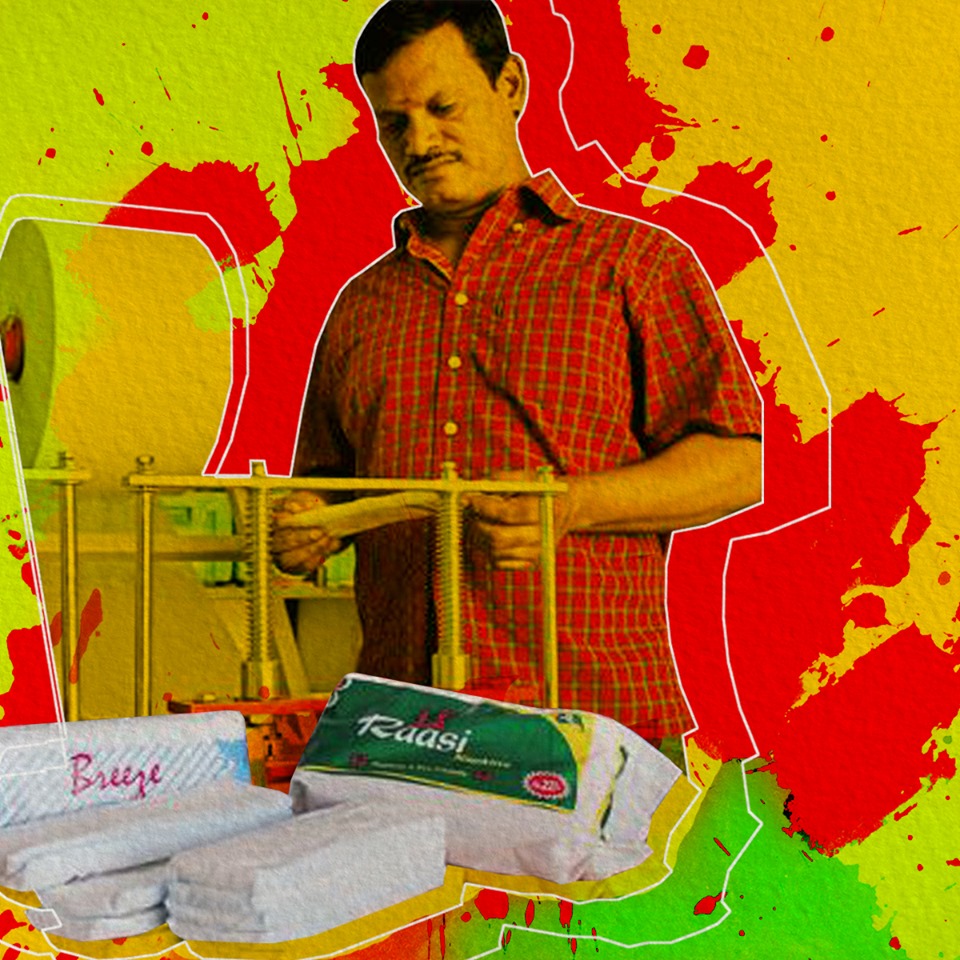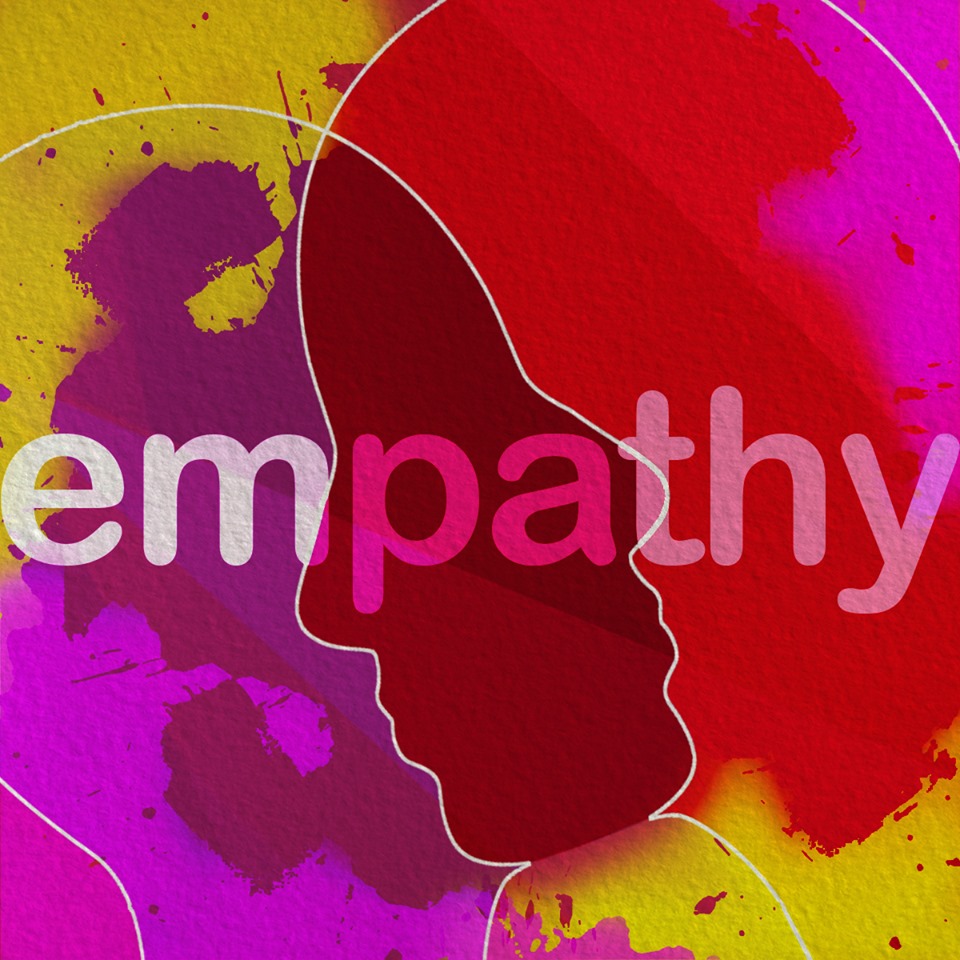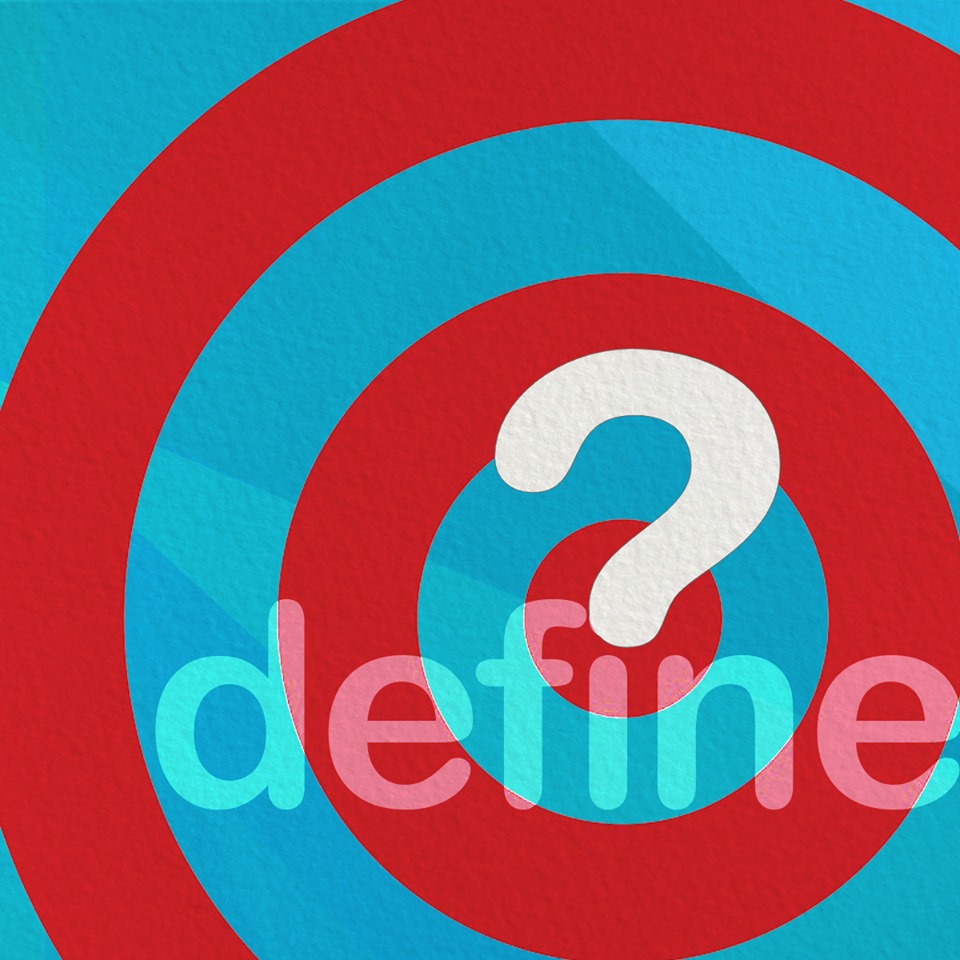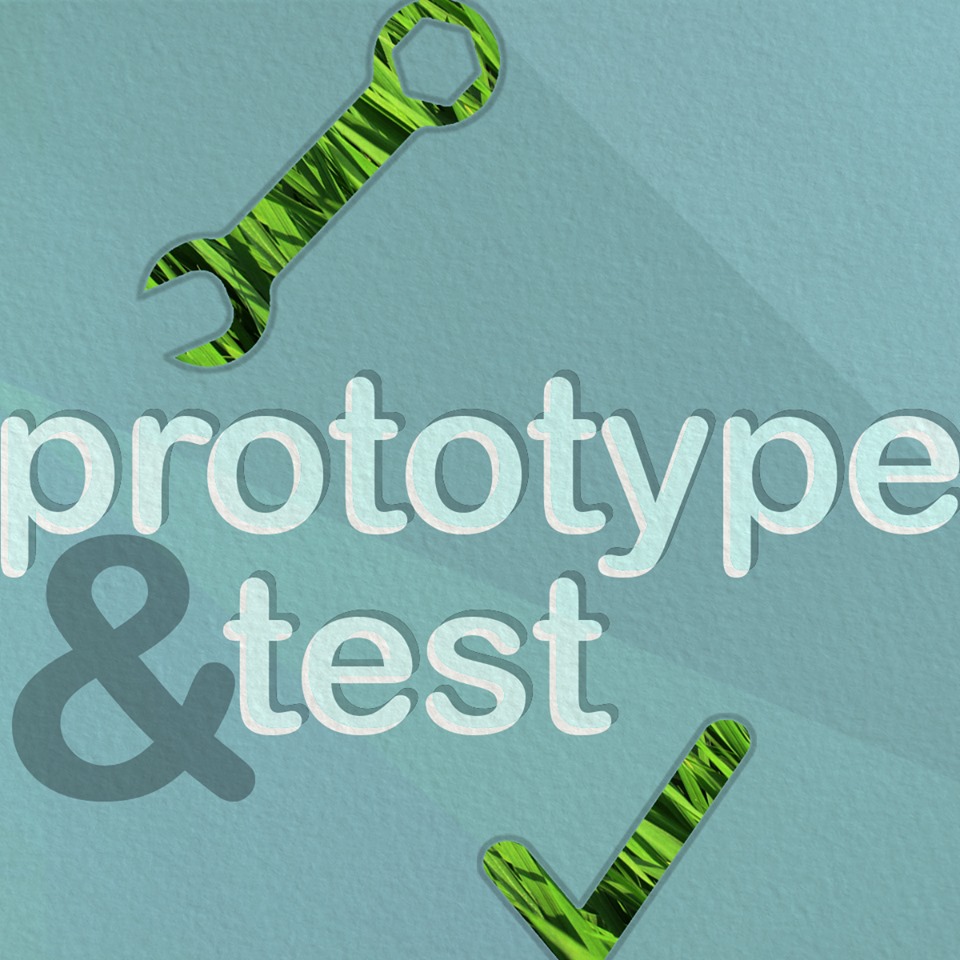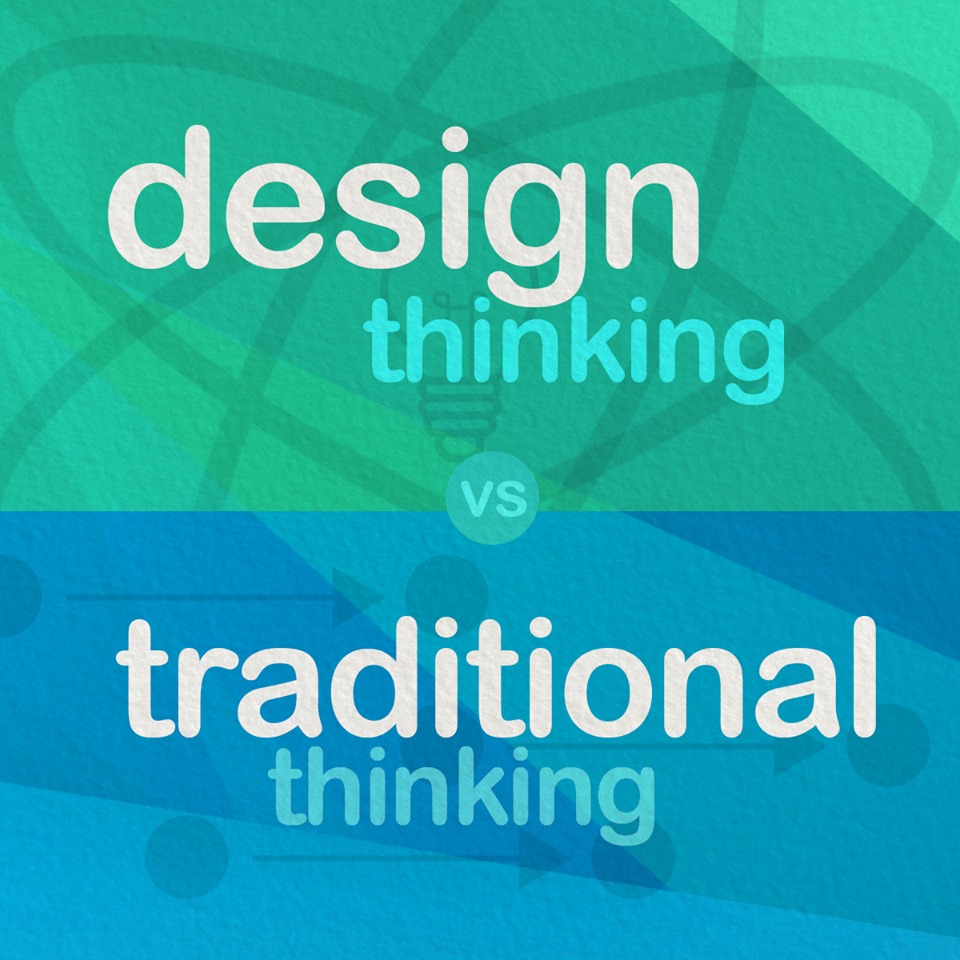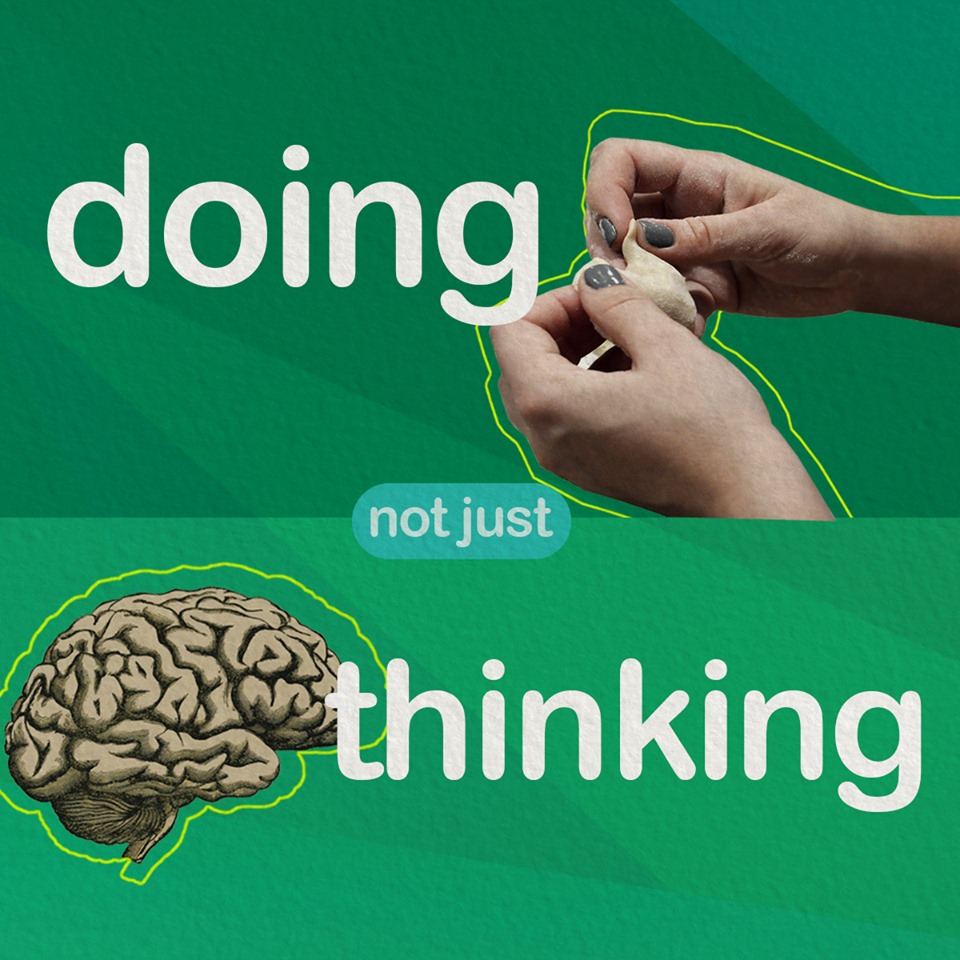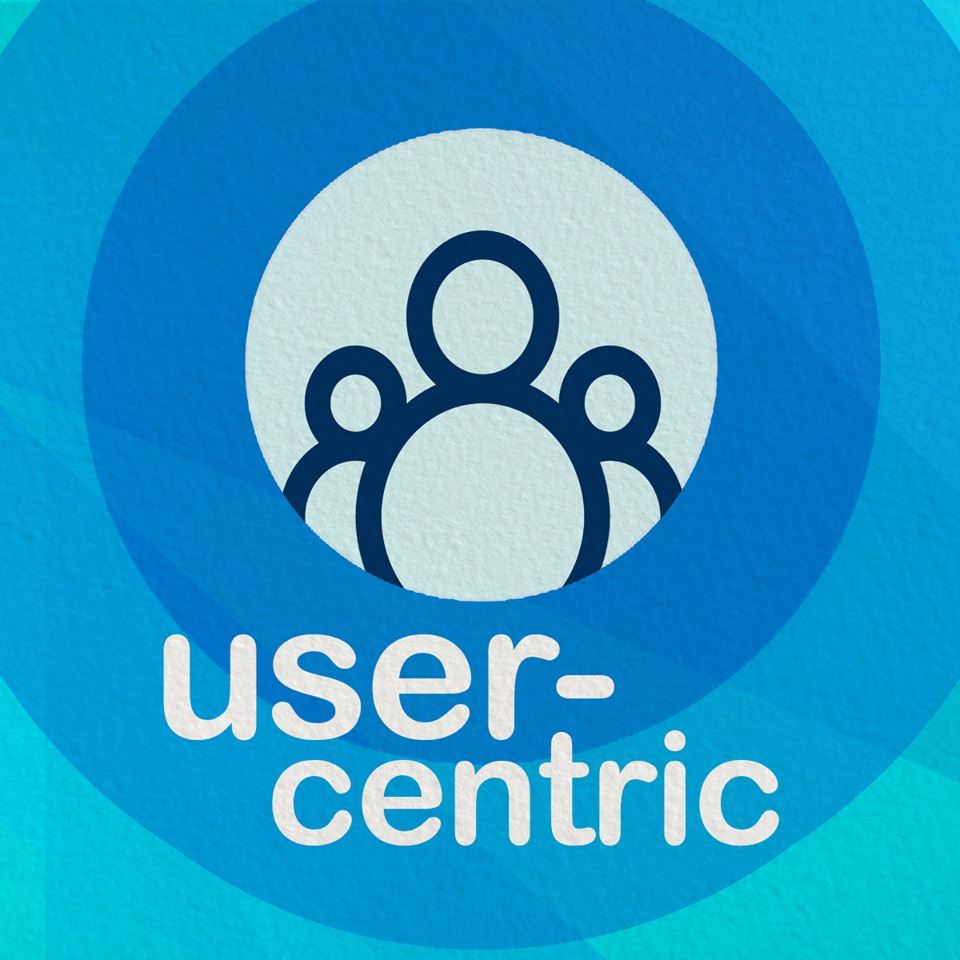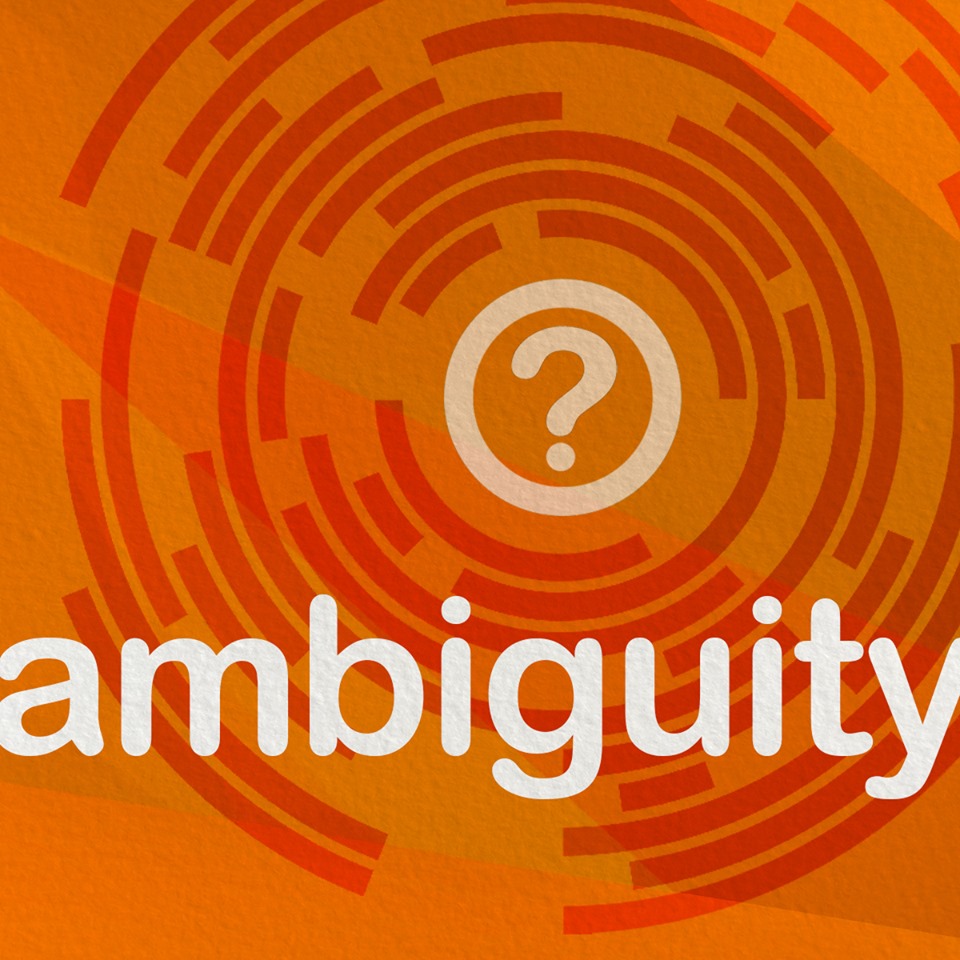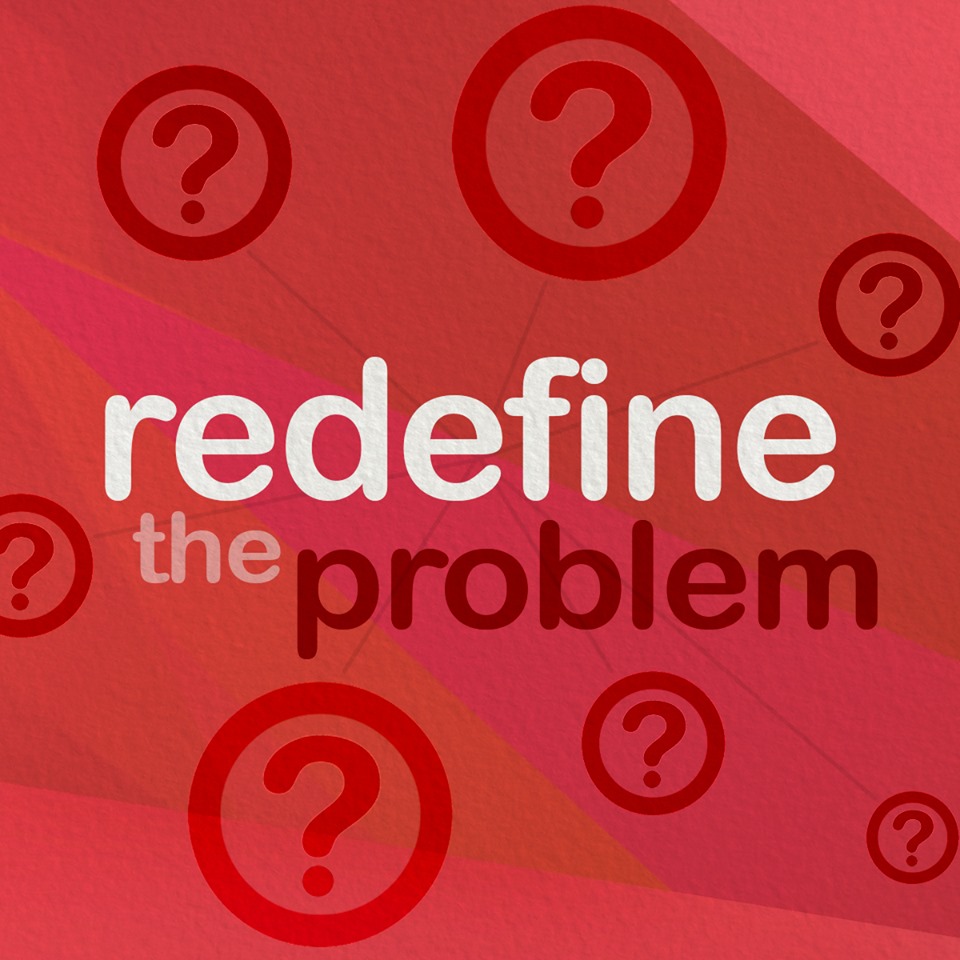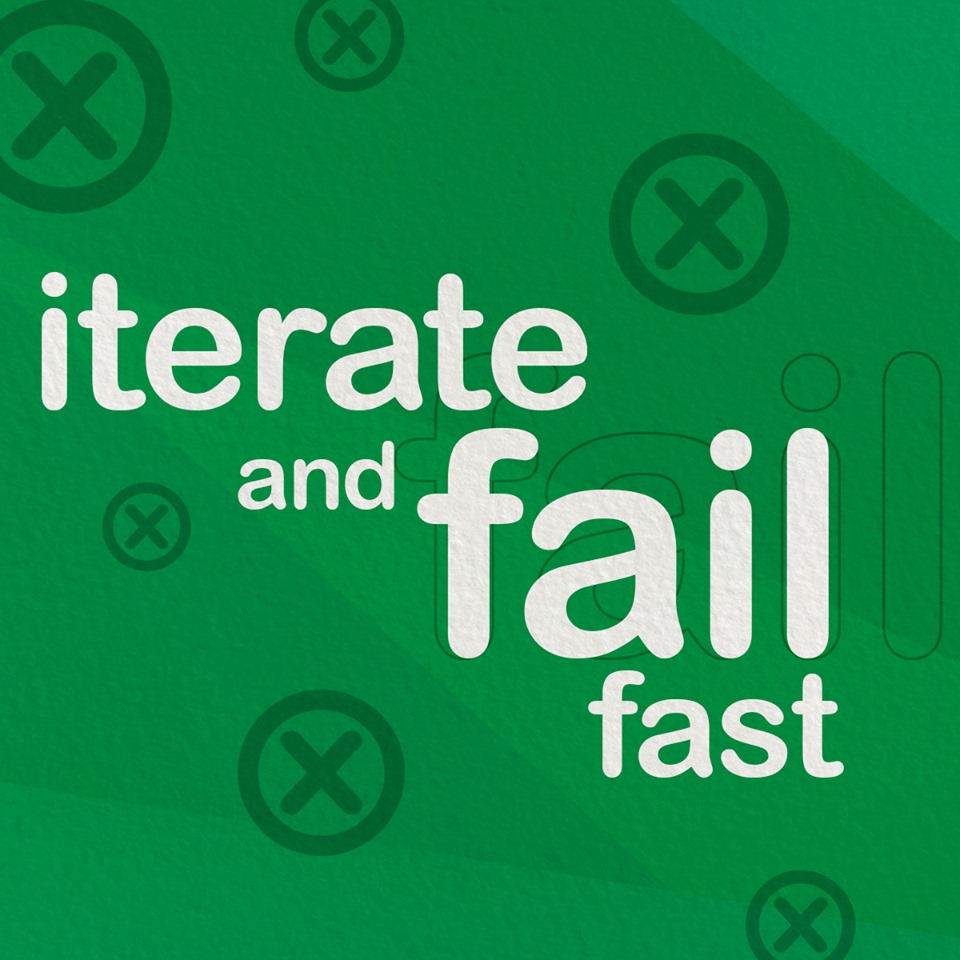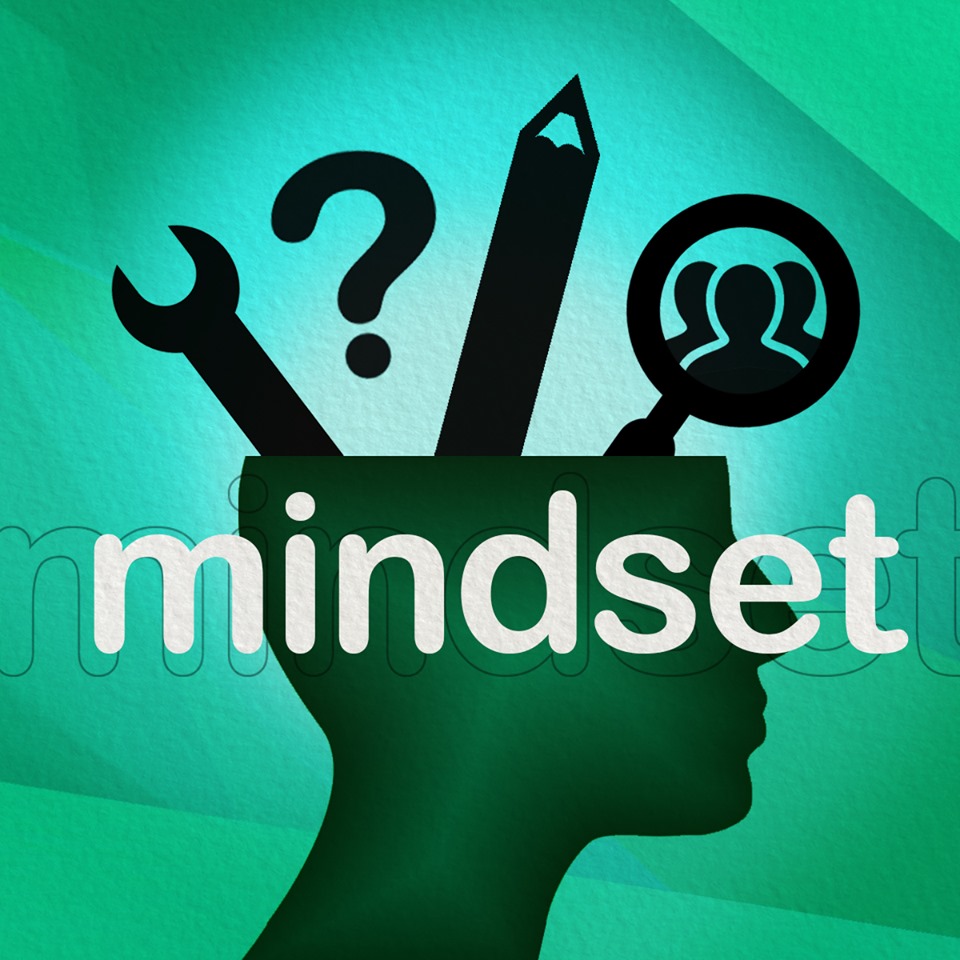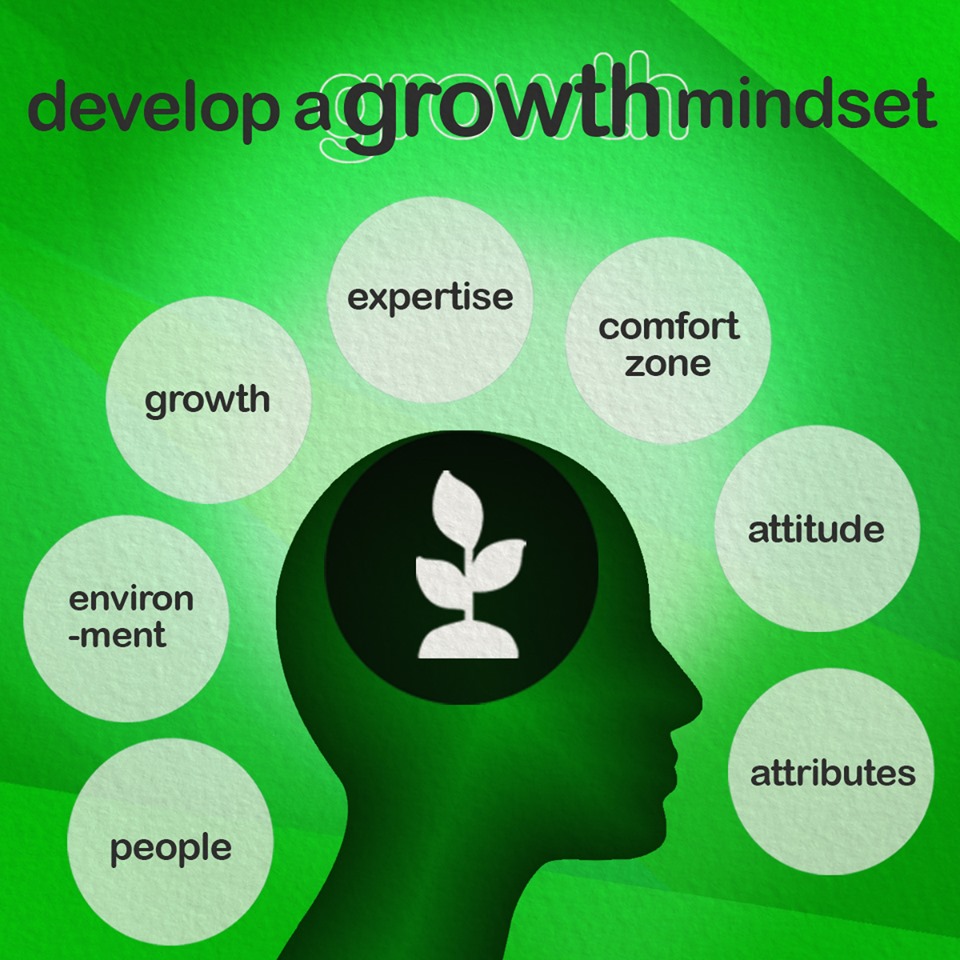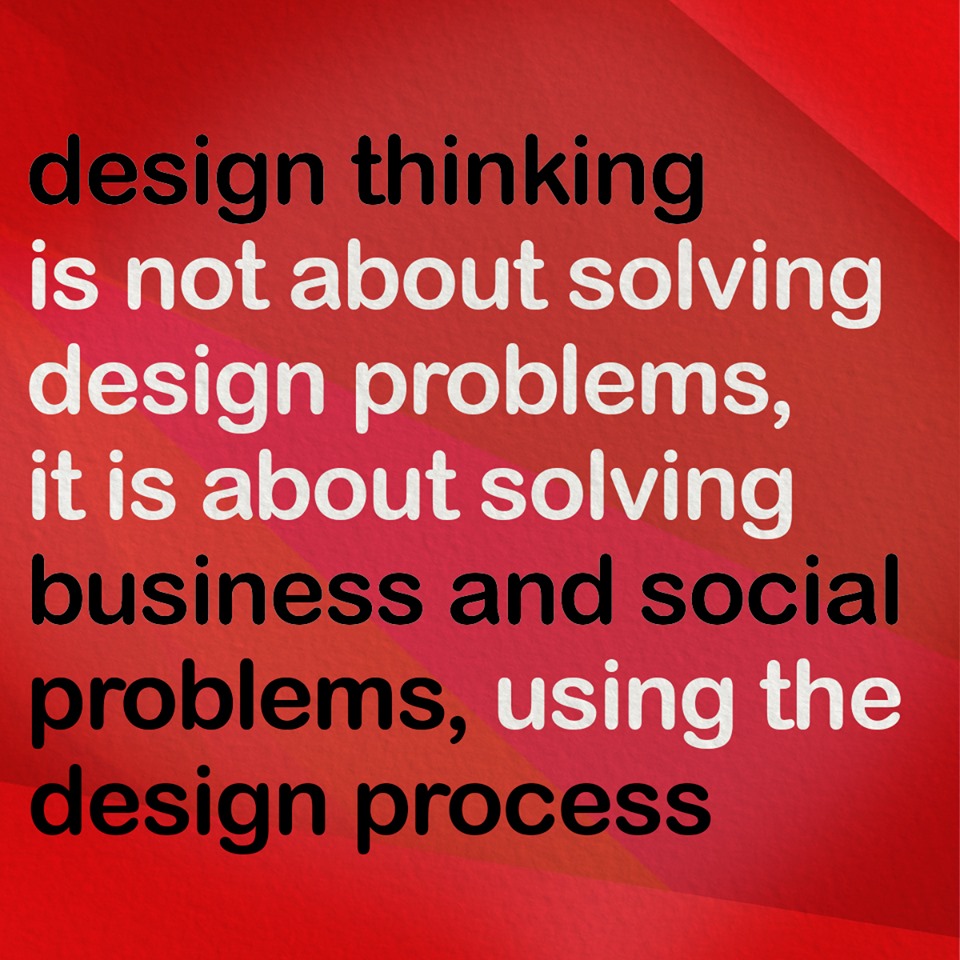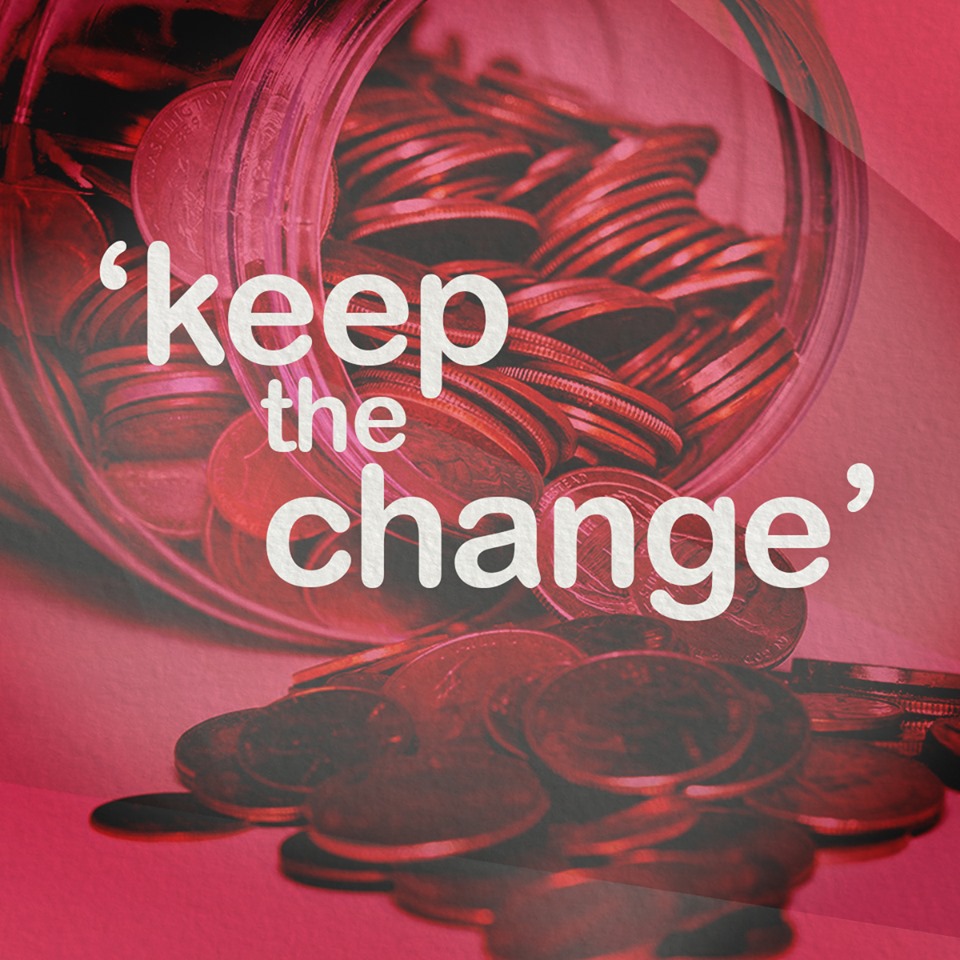Supriya Kulkarni is a Brand Strategist, Visual Storyteller and Entrepreneur. She decodes brands and behavior to deliver strategic solutions that result in meaningful experiences for customers and great value for businesses. She also successfully runs her branding and strategic design consultancy, Pink Tea Company, in two countries.
Design Thinking has been one of the buzzwords of the decade and has generated huge interest in the form of books, articles, blogs, conversations, lectures and workshops, and well-known companies have made it the mantra for driving creativity and innovation in their businesses.
All through June 2019, Supriya shared posts on Indoindians Facebook, that simplify and explain the concept, process and tools of design thinking, so you can understand how to use it for innovation or problem solving in your work, social or personal life.
1 June
‘Design Thinking’ has been one of the buzzwords of the decade and has generated huge interest in the form of books, articles, blogs, conversations, lectures and workshops. Several well-known companies have made it the mantra for driving creativity and innovation in their businesses.
Throughout this month, I will share posts that simplify and explain the concept.
So, let’s begin with a Bollywood movie.
You may have watched ‘Pad Man’, inspired by the life of Arunachalam Muruganantham, a school dropout from a poor South Indian family who invented a user-friendly machine to manufacture low-cost sanitary pads.
The interesting fact is, he intuitively applied the process of Design Thinking without formally studying it, but proved nonetheless that design thinking can successfully solve complex problems with the right approach and mindset.
So what exactly is Design Thinking?
As the name suggests, Design Thinking draws inspiration from the methods and processes traditionally used by designers. It is a highly user-centered approach to solving complex problems, in a way that is feasible with technology and viable for business.
Read the next post to understand how the man who revolutionized menstrual hygiene in rural India used the Design Thinking process.
Reference: Livemint, BBC News
2 June
Design Thinking focuses on people first, seeking to uncover their needs to design effective solutions. To understand what they want, it’s necessary to put yourself in their shoes, or empathize with them.
This is the first step in the Design Thinking process. Empathy.
Muruganantham, the original ‘Pad man’ of India was shocked to observe that women in his village didn’t just use old rags, but other unhygienic substances such as sand, sawdust, leaves and ash, simply because they couldn’t afford to buy sanitary pads.
To understand the pain and discomfort of these women, he himself used not just the rags, leaves and sand, but also his initial experimental pads doused with goat’s blood.
The deep and profound empathy that Muruganantham felt for the village women pushed him to keep experimenting and designing until he found a viable solution.
So, Empathy, the most important step in the Design Thinking process is the foundation of human-centered design, where you observe and engage with users, immerse yourself to uncover the needs or problems they may or may not be aware of, and dig deeper to discover the emotions guiding their behavior.
Let’s keep exploring the next steps in the Design Thinking process.
Reference: BBC News
3 June
Hi, let’s explore another story to learn about the next step in Design Thinking.
Denmark is one of the world’s most developed countries, yet a huge percentage of senior citizens depend on government-sponsored meals.
It is estimated that more than half of Denmark’s seniors have poor nutrition and a quarter are actually malnourished. The result is both health problems and low quality of life for the elderly, and a heavy economic burden for the government.
In response to this growing social problem, the municipality officials, as well as the kitchen service that provided the meals decided they needed to improve the menu, so that seniors would eat more.
The innovation design firm that was brought in to redesign the menu used Design Thinking’s user-centered methodology, by starting with Empathy.
They began by diving deep and immersing themselves into the lives of the seniors to understand their needs, wishes and behaviour. This would help the firm to identify the problem, so they could start working on the most effective solution.
Well, guess what they discovered was the real problem? Let’s find out tomorrow!
Reference: This is Design Thinking
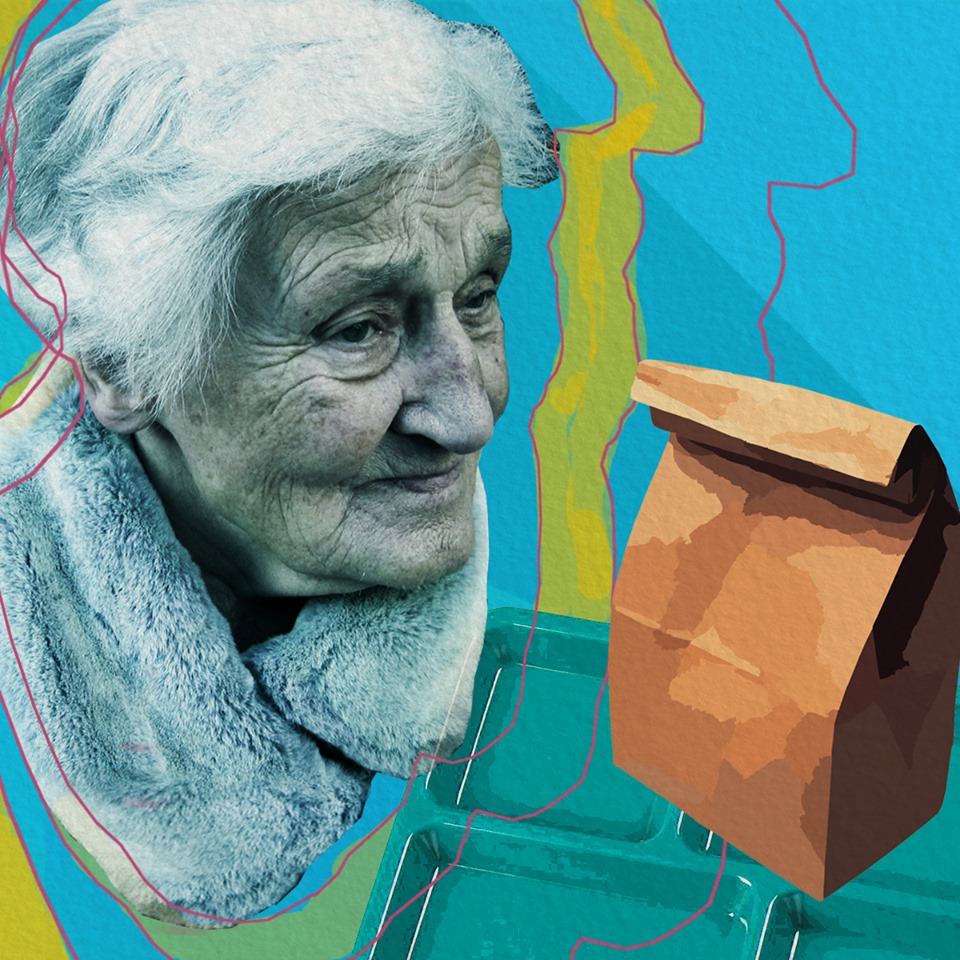
4 June
Hi, let’s continue our story from yesterday.
Design Thinking, as we saw, is a very user-centered approach to solving complex problems. However, in order to create effective solutions, we need to get to the root of, or define, the right problem.
This is the second step in the Design Thinking process. DEFINE. This stage is about gathering all our findings from the Empathy step and synthesizing, or making sense of them to define the problem.
Going back to the story of the Danish municipality that wanted to redesign the menu for seniors, the innovation design firm discovered that both the seniors, as well as the kitchen workers who prepared the meals for them, were unhappy.
For the workers, a public-service kitchen was a low-status job, so they were demoralized and unmotivated. For the seniors, the social stigma of receiving government assistance was embarrassing and degrading, and the loss of control over food choices, as well as eating alone was painful for them. This unhappy situation lessened their appetites, leading to the nutrition problem.
As the municipality officials realized, just changing the menu would not solve the larger problem of the workers’ motivation, or the seniors’ self-esteem.
Realizing this, there was a complete repositioning of the meal recipes as well as the catering service, which was renamed ‘The Good Kitchen’. The new menu resembled a restaurant menu with categories such as entrees, desserts, etc. and had mouth-watering descriptions and food pictures.
The kitchen workers felt more like restaurant chefs cooking for customers, hence took more pride in their work. The seniors were happy with the menu, their meals, as well as the flexible recipes, and there was a 500% increase in meal orders in the first week alone.
The Good Kitchen, and the innovation design firm, Hatch & Bloom, shared the Danish Design Prize for Service Design, as well as the Local Government Denmark Prize for Innovation in 2009.
So you see why ‘Define’ is an important step in the Design Thinking process- sometimes we may need to reframe the problem based on the user insights rather than our own perspective in order to create the most effective solutions.
Keep reading!
Reference: This is Design Thinking
5 June
Hi, have any of you travelled recently to Makassar in Sulawesi?
You may have seen the colourful minivans, or ‘Pasikola’, which transport children from home to school and back. There is an interesting story behind how the Pasikola came about.
Traffic congestion in Makassar was steadily growing, with 200 new motorbikes and 45 new cars being added daily. The main form of public transport were minivans called ‘pete-pete’ (known as angkots, elsewhere in Indonesia) which were not government-run, but privately owned and rented out to drivers- who also negotiated the routes.
The lack of formal planning among the pete-pete and private vehicles resulted in huge traffic congestion and accidents. The Mayor’s office wanted to reduce the number of private vehicles and get citizens to use public transport.
The city of Makassar and other stakeholders used the Design Thinking process to address these challenges. After the first two steps of Empathy (deep understanding of users) and Define (having an accurate and clear problem statement), it was time to put on the creative thinking hats.
The idea for the colourful Pasikola was actually born at this stage, but we’ll read more about that next time!
References: Gooto, Bakti
6 June
Hi, let’s continue the story of Pasikola, and the next step in Design Thinking.
The city of Makassar partnered with the United Nations Development Programme (UNDP) and Pulse Lab Jakarta to address its public transport challenges. The Pasikola or ‘Petepete Anak Sekolah’ was one of the many ideas which originated from a design thinking workshop conducted by this group and other stakeholders.
‘IDEATE’, the third step in the Design Thinking process is where we aim to come up with as many radical routes, angles and concepts as possible. This stage is also a judgement-free zone, where innovative and unexpected outcomes are explored without narrowing down or selecting any particular one. But while it is fine to explore wild ideas, it is important to stay centered on the problem being solved.
At the end of a 3 three-day workshop, six groups presented their ideas to a UNDP representative and Head of the Makassar City Transportation Service, out of which Pasikola was one of the short-listed.
The interesting fact was, the pete-pete, which was part of the congestion problem, became part of its solution. The Pete-Pete were converted to Pasikola, the school transportation vehicle, solving many problems at one go- reliable school transportation, reduced traffic congestion, time saved for parents (over two hours per day) and a chance for pete-pete drivers to supplement their income.
Pasikola recently won the 2018 ‘Smart City Innovative Application Awards’ in Taiwan, in the smart-mobility category, proving that Design Thinking with the right approach can solve complex problems!
References: Gooto, Bakti
7 June
Hi, let’s explore one more story to learn about the next steps in Design Thinking.
We all know sanitation is a big challenge in developing countries. Even in a country like Cambodia, many people in villages cannot afford a good-quality latrine. While some save for years to build one, most people just live without one.
Villagers simply squat in rice fields to defecate, a practice that often results in fly-infestation and contaminated food, leading to diarrhea. Modesty discourages women from using the fields during the day, yet venturing out at night brings the risk of sexual assault.
The not-for-profit International Development Enterprises (iDE) in Cambodia reached out to a design thinking firm for solutions to this social problem.
The project began with ‘Empathy’: observations and interviews with all stakeholders- the users, installers and manufacturers. In the next stage ‘Define’, the learnings were distilled and synthesized into insights that highlighted problems and opportunities. The next step, ‘Ideate’, generated numerous ideas from many rounds of brain storming sessions.
At the end of project, a viable solution was created. But what was the magic step in the Design Thinking process that ensured a latrine that was hygienic, low-cost, easy-to-build, used local material, and also easy-to-maintain in the long-term?
Keep reading to find out!
Reference: NextBillion
8 June
Let’s continue the story of the Cambodian Sanitation project, and the next two steps in the Design Thinking process.
In the Cambodian Sanitation project, it was crucial to get the most viable solution that could be scaled across the country.
This is where PROTOTYPE, the next step in the design thinking process, made all the difference. As everyone would know, having a brilliant idea is not enough- it is essential to have efficient implementation.
Prototyping means getting ideas and concepts out of your head into the physical world. Throughout this stage, the proposed solutions may be selected, improved, redesigned or completely discarded, depending on how they perform in their prototype form.
The next crucial step was TEST. You never know if a prototype will work until you test it with the real users. Many of the promising and shortlisted ideas were converted to 2D and 3D prototypes, which were shared with, reviewed and tested by all stakeholders- villagers, masons, ring producers and retailers.
These again underwent multiple rounds of iterations and retesting, until a design emerged that satisfied user needs as well as marketing requirements, and the ‘Easy Latrine’ was born. A latrine that was hygienic, low-cost, easy-to-build, used local material and also easy-to-maintain in the long-term. And cost only around $25.
The ‘Easy Latrine’ not only won the villagers’ hearts, but also the 2010 International Design Excellence Awards.
Reference: NextBillion
10 June
Whenever we speak of Design Thinking, there are often questions about how it differs from normal or traditional thinking.
Design Thinking is called so, because it draws inspiration from the tools, methods and processes traditionally used by designers. It is a very user or human centered approach to solving complex problems.
So how is the Design Thinking approach to problem-solving different from the way we have traditionally approached problems? Are there advantages to Design Thinking over traditional thinking? Do we need to be trained as designers to practice Design Thinking?
In the next few posts, we will try to get answers to these questions by exploring the differences between the two approaches.
Keep reading!
11 June
Hi. Let’s begin examining the differences between traditional problem-solving approaches and the Design Thinking approach.
Firstly, the term ‘Design Thinking’ is slightly misleading. This approach is not just about ‘thinking’, but is much more about ‘doing’.
In fact, ‘Bias Toward Action’ is a core principle or mindset of Design Thinking. It is a tool or an approach that believes in finding solutions by promoting action-oriented behavior, rather than the traditional approach of discussion-based work, involving more of reporting and documentation.
As we saw in the story of Arunachalam Muruganantham, the ‘Pad Man’ of India, he very actively focused on finding solutions to manufacture low-cost sanitary pads, rather than just thinking of his wife’s problem.
So the first lesson is to understand the problem and then focus on the solution. Stop discussing, start doing.
12 June
Let’s look at another core difference between traditional thinking and the Design Thinking approach.
As we know, Design thinking is a ‘human-centered’ approach to problem solving and innovation that takes inspiration from the tools and processes used by designers, to integrate the needs of people, the feasibility of technology and the viability of business.
Traditionally, businesses are hard-wired to look at numbers and results, and most lose sight of the human element. Design Thinking helps shift focus away from a ‘features-first’ approach to a ‘user-first’ mentality, emphasizing being ‘user-centric’, rather than ‘business-centric’.
Design Thinking begins with a shift from looking at real people rather than a demographic. It requires developing an understanding of the people for whom we’re designing products or services, looking into what they need or want, their motivations and problems. It is about putting users first, so that the solutions we design are more accurate, effective and add real value to their lives.
13 June
Traditional thinking is based around assumptions, where we get stuck into patterns of thinking and doing, making innovation or new solutions difficult. When most projects are begun, there are always assumptions made, either about the problem, the consumers, the research or the outcomes.
The Design Thinking approach is built primarily on the notion of ‘Ambiguity’- exploring the possibility of the never-thought, never-seen, never-heard or never-done-before.
Design Thinking requires practitioners to keep an open mind towards the unknown and the unexpected, whether it is situations, problems or solutions.
In fact, having faith in the Design Thinking process and embracing ‘ambiguity’ or ‘not knowing’, gives us the freedom to explore creatively, pursue different ideas, and arrive at innovative solutions that have true impact.
16 June
Let’s begin this post with a quote by Albert Einstein: ‘If I had an hour to solve a problem I’d spend 55 minutes thinking about the problem and five minutes thinking about solutions’.
Generally, when we have a problem to work on, we’re eager to get to the solution. What we don’t realize is, the quality of our solutions will be in direct proportion to the quality of our understanding of the problem.
Unlike traditional thinking, the Design Thinking approach puts much emphasis on the ‘Define’ stage, which is crucial in tackling ill-defined or unknown problems by ‘reframing’ or ‘redefining’ questions in human-centric ways.
Henry Ford, inventor of the Ford automobile, famously said, ‘If I had asked people what they wanted, they would have said faster horses.’ But Ford understood that their deeper desire and purpose was to get from one place to another faster.
Redefining the problem not only helped him avoid trying to engineer a faster horse, but instead led to the creation of the Model T, revolutionizing the automobile industry.
Keep reading!
19 June
Hi, we’re exploring differences between traditional problem-solving and the Design Thinking approach. Let’s look at one of the most important differences today.
The traditional approach mostly demands predictable results and getting things right the very first time, in order to avoid failure.
The Design Thinking approach encourages iteration, testing and failure. Yes, that’s right- this approach to problem-solving actually wants us to fail faster and often, so we can succeed sooner and better.
The philosophy of ‘design, test and iterate’ is central to the Design Thinking process. It allows us to have unexpected breakthroughs by creating several rapid prototypes and getting quick feedback from actual users and customers before spending too much time, effort or money on any one particular idea.
In keeping with the ‘fail fast’ philosophy, iterative design helps us develop our ideas, products or even set of behaviors, quickly and incrementally. This approach works better in the long run, because fixing errors after production or launch can be hugely expensive!
20 June
Hi. In earlier posts, we explored the five steps in the Design Thinking process through different stories, and also how the Design Thinking approach differs from that of traditional thinking.
Design Thinking can be used for innovation or problem solving in business, social or personal contexts; and the good news is we don’t need to be trained as designers to practice it.
Learning the methodology and developing a design-thinking mindset allows everyone to use the tools and address a wide range of challenges. You could be an educator, banker, social worker, furniture designer or entrepreneur- Design Thinking is pertinent to any field and purpose.
So how do we develop the mindset that fosters design-thinking? Keep reading to find out!
23 June
The Growth mindset is conducive to Design Thinking, and has similarities in terms of the approach. Let’s explore ways in which we can develop this mindset by practicing daily, on small as well as bigger challenges:
Attributes: Know that abilities, intelligence and personality are adaptable and can be changed over time with effort and work. Redefine ‘genius’- everything requires effort and hard work, not talent or skill alone. Reward actions, not traits- it’s important to do smart things, not just to be smart
Attitude: Life is a journey of learning – when you make a mistake or fall short of a goal, you haven’t failed- you’ve learned and improved. Value the process over the end result- enjoy the learning process, don’t mind when it continues beyond an expected time frame.
Comfort Zone: Acknowledge and embrace imperfections, hiding from weaknesses will not help you overcome them. Be curious- take risks by seeking new challenges and experiences
Expertise: Develop a broad skillset and repertoire; take many paths through experimentation- this way you’ll not be caught short when you have new challenges
Growth: Question assumptions, reframe questions, redefine problems. Learn to spot opportunities that others overlook
Environment: Be open to not knowing all the answers, and to making mistakes. This attitude will help you get through in uncertain times and unstable environments
People: Create and harbor empathy. Don’t compare yourself to others, but realize that humans share the same weaknesses and strengths. Learn from other people’s mistakes and get inspired by their successes.
Above all, take ownership over your developing mindset through conscious internal reminders. Keep practicing!
Reference: LinkedIn, Teach Thought
24 June
Hi. In earlier posts, we explored the five steps in the Design Thinking process, its evolution, differences between traditional thinking and the Design Thinking approach, and how we can develop a mindset that is conducive to Design Thinking.
This approach and process can be used for innovation or problem solving in many areas like marketing, products and services, business processes or platforms, organizational structures, as well as in social and personal contexts.
It can be used for projects of any scale or timeframe- ongoing projects, things on the long-term strategic roadmap or even for situations or problems we haven’t thought of yet. So Design Thinking is good not only for existing issues, but gives us the tools to explore ‘what could be’, and can be used for bringing about impactful change within many different areas.
Over the next few posts, let’s explore some striking examples where Design Thinking has provided effective, human-centered solutions in business and social contexts.
Reference: Slideshare
25 June
The Design Thinking approach plays a crucial role in healthcare, where patients are looking not only for an accurate diagnosis and efficient cure, but also for positive experiences.
It was observed that when children had to be scanned in MRI Imaging machines, they were so intimidated and scared by the huge scanners, that most had to be sedated before the scan. The others suffered from anxiety and were not able to stay still while the procedure was underway, making the process stressful, and forcing scans to be redone.
Doug Dietz, Innovation Architect and Chief Designer of GE Imaging Machines, had a simple but brilliant plan to solve the problem: offer an environment that was so welcoming that children would feel like being scanned is an adventure, and not a trial.
This led to the creation of the ‘Adventure’ series- where the scanner was made to look like part of the story. For instance, in the ‘Pirate Island Adventure’, the scanner looked like a pirate ship, and the room was decorated with their favorite characters.
Consequently, the entire MRI experience became like playtime. Sedation rates went down from 80% to 10%- so both hospitals and parents were relieved. Kids loved the new experience, and quite a few of them actually wanted to keep coming back!
References: LinkedIn, GE Healthcare
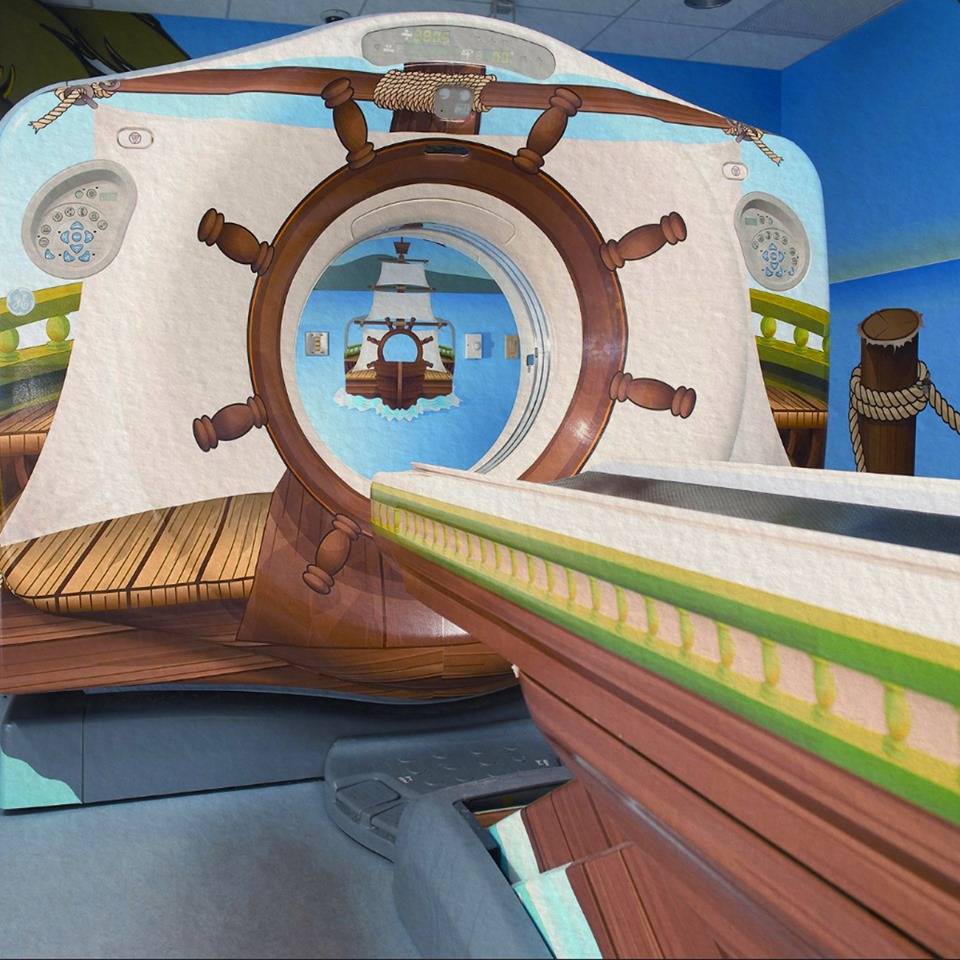 | 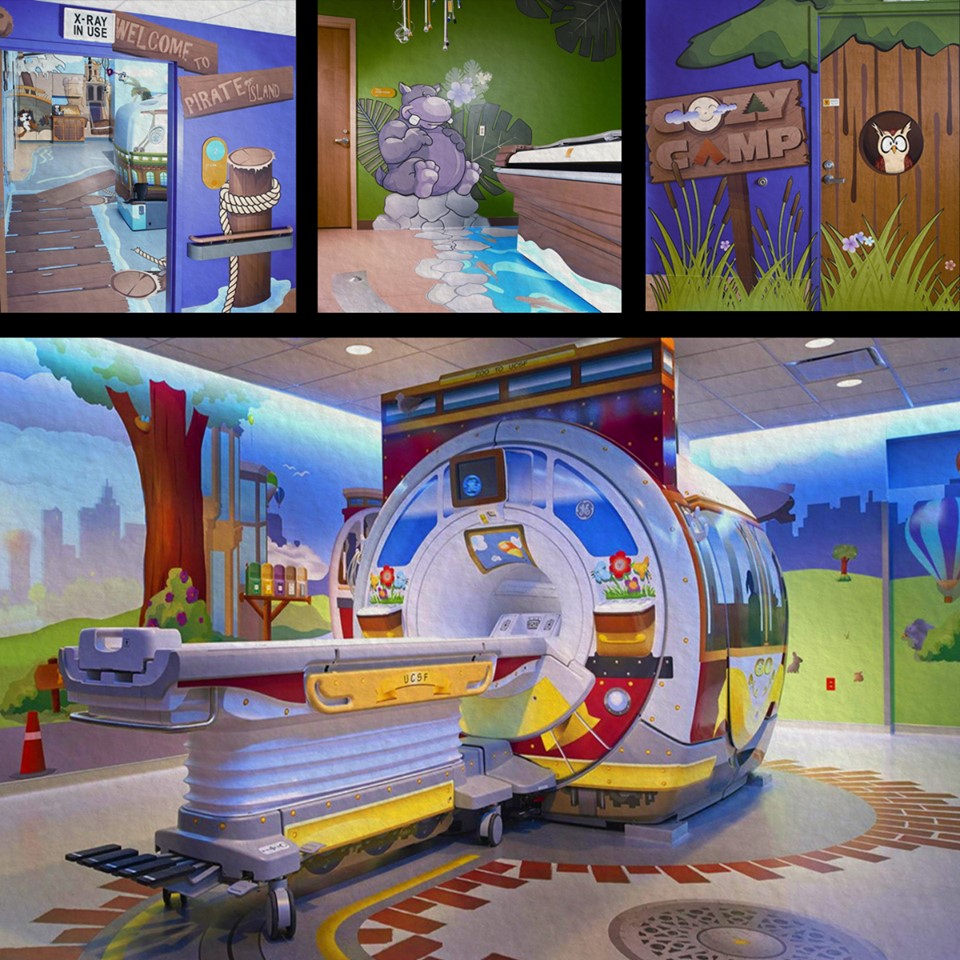 |
26 June
Design Thinking can be hugely impactful when used for social innovations.
Villages in developing countries witness more than a million premature infant deaths, often within 24 hours of birth, and the biggest cause of death is hypothermia.
While local hospitals may have incubators, they remain largely unused, because the babies who need them are born in remote areas, miles away from hospitals.
In 2008, in a ‘Design for Extreme Affordability’ class at Stanford University, students were challenged to come up with an incubator that cost less than 1% of the cost of traditional incubators.
After extensive research, a team developed the ‘Embrace Infant Warmer’- a tiny sleeping bag containing a paraffin-based pouch that, once warmed in a heater, can maintain temperature for four hours. The best part is, this warmer can be used at home, during commute, and anywhere else.
Embrace infant warmers have not only won several awards, including the Economist Innovation Award and TED Fellows award, but have been used to care for over 200,000 low birth weight and premature infants across 20 countries in the developing world!
Reference & Image: LinkedIn, Medium, Global Giving, Embrace
 |  |
27 June
Hi, we’re exploring stories of Design Thinking in action, and here’s a classic example from banking.
Bank of America partnered with design consultancy IDEO to understand how to get more people to open bank accounts.
The design firm observed and interviewed dozens of families, and discovered that people tended to round up their checkbook entries and financial transactions. Out of this observation was born the insight that people liked the act of saving, the amount really did not matter.
Thus was born ‘Keep The Change’ program, a great way for people who have trouble with saving, to build up some savings. Every time a customer bought something with a Bank of America debit card, the bank rounded up the purchase to the nearest dollar, and transferred the difference from their checking account into the savings account.
This program brought out a radical shift in peoples’ mindset, and was rated very high on uniqueness and ‘human’ value. After its launch, the program attracted 2 million customers in less than a year.
Since then, more than 12 million customers signed up for the program and saved more than 2 billion dollars in total. 60% of all new customers enrolled for ‘Keep the Change’, and 99% of customers who signed up for the program stayed with it.
References: LinkedIn, This is Design Thinking
29 June
Hi, in the last few posts, we looked at examples of Design Thinking in healthcare, social innovation and banking.
Design Thinking is not only effective when used in business and social contexts, but can be used to great advantage to build the future of living.
Singapore, often cited as the city of the future, is extremely forward-looking, design-conscious and user-centered.
Let’s explore how Design Thinking has been deployed in Singapore to make it cutting-edge and future-ready, yet completely centered around elevating ‘human’ experiences.
30 June
Hi, through the month of June, we explored the topic of Design Thinking: the five steps in the design thinking process, its evolution, how the design thinking approach differs from that of traditional thinking, and how to develop a mindset conducive to this approach.
We also explored stories where Design Thinking has provided effective, human-centered solutions in healthcare, social innovation, banking and creation of future-ready cities.
Design Thinking can be used for all this and so much more. It can actually help change and improve our lives by setting goals and achieving them effectively.
Let’s see what Bernard Roth, a professor of engineering at Stanford University, says about changing our life through Design Thinking.
Happy reading and applying this approach in your everyday life!




